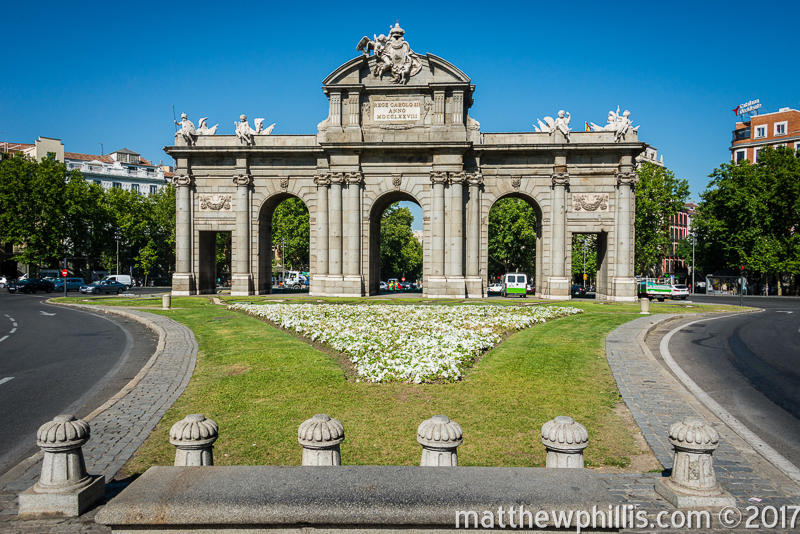 |
| Madrid loves flags! |
 |
| Statues aplenty in Madrid. |
 |
| The beautiful National Library. |
 |
| The Historical Central Post Office - also known as the 'Palacio de Comunicaciones.' |
 |
| Bike Mad! The public cycling system, nowadays so common throughout Europe. |
 |
| Colourful Colonial buildings in Plaza Mayor. |
 |
| The cathedral of Santa Maria. |
 |
| Philip III in Plaza Mayor - the central square of the city. |
 |
| "All Roads Start From Madrid." |
 |
| Statue of the Bear and the Strawberry Tree. |
 |
| Love locks in Plaza Mayor. |
 |
| Plaza Mayor and the statue of Philip III of Spain, with The Casa de la Panadería (Bakery House) in the background. |
 |
| The Puerta de Alcalá. |
 |
| Dressing up in Plaza Mayor. |
 |
| Plaza Mayor and it's painted buildings |
 |
| The courtyard in the Royal Palace. |
 |
| The Royal Palace. |
 |
| One of the many places to get beer and tapas. |
 |
| Looking down Gran Via. |
 |
| Plaza de España with the statue of the famous writer Cervantes and his well-known characters. |
 |
| The original 'Dynamic Duo,' Don Quixote de la Mancha and Sancho Panza. |
 |
| Apartment buildings in the city. |
 |
| Not a bad place to live really. |
 |
| Madrid is a beautiful city. |
 |
| Buen Retiro Park. |
 |
| Parc Retiro in the centre of the city. |
 |
| The famous "Schweppes" building on Gran Via. |
 |
| Rowing in Parc Retiro. |
 |
| The Madrid Metro. |
 |
| Goodbye Spain (again) and hello South Africa (again). |































